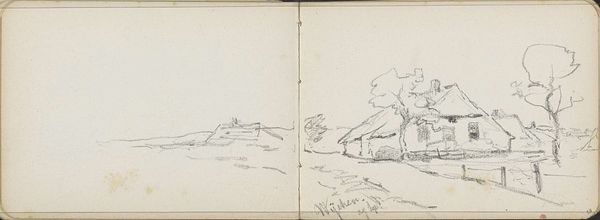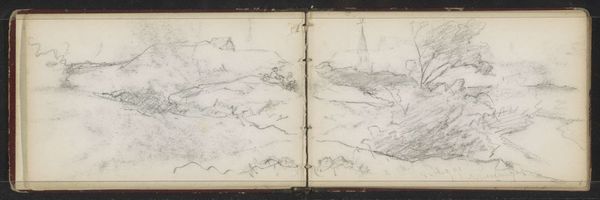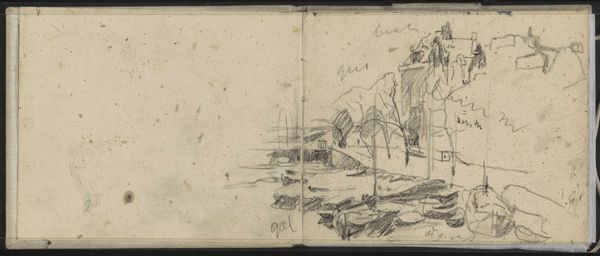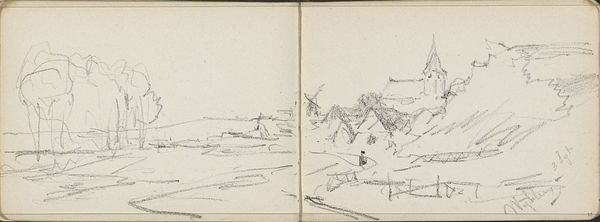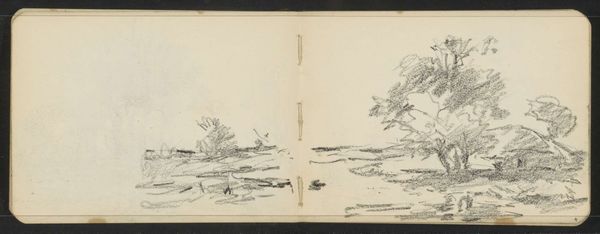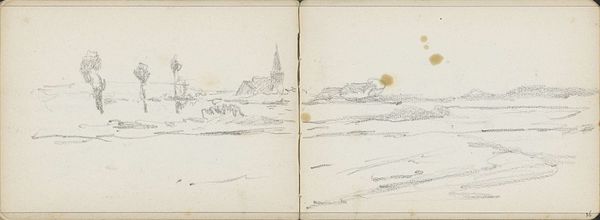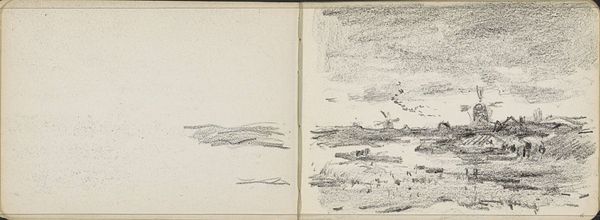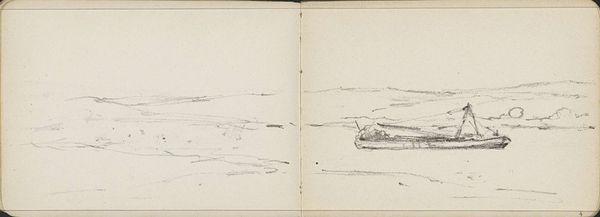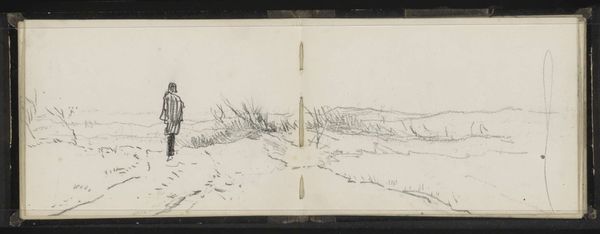
drawing, pencil
#
drawing
#
light pencil work
#
dutch-golden-age
#
pen sketch
#
sketch book
#
landscape
#
personal sketchbook
#
sketchwork
#
ink drawing experimentation
#
pen-ink sketch
#
pencil
#
pen work
#
sketchbook drawing
#
sketchbook art
#
realism
Dimensions: height 104 mm, width 179 mm
Copyright: Rijks Museum: Open Domain
Curator: Here we have Willem Cornelis Rip’s “Landschap met molens bij Zaandam,” a pencil drawing from 1895. What strikes you first? Editor: A feeling of transience, I think. The sketch's fragility, the bare landscape. It whispers of a world caught between industry and nature. Curator: Rip uses the sketch format to explore the rapidly changing Dutch landscape. Notice how the windmills, the subject of this sketch, were crucial tools of industry at the time. Each element is rendered with swift, utilitarian lines; the work feels like a visual inventory of resources, even labor. Editor: Yes, and the windmills, those powerful turning structures, speak to the ingenuity of the Dutch. The land itself becomes an active symbol, almost a character here, wrestled and shaped to humanity's needs. It’s as if Rip captures a pivotal moment, before those wind-powered sawmills turned fully to steam. Curator: Indeed. Look closer. There’s a certain practicality embedded in the pencil strokes themselves. This isn't idealized pastoral scenery. It's an engagement with the direct processes of resource extraction and transformation. Each windmill isn't just a symbol but also represents real economic input from both the material itself and human hands involved. Editor: The human figure, so small, almost incidental, seems to underscore humanity's relationship with that land, dominated by these giants. They aren’t gods, of course, but stand for forces changing a nation, a way of life—the constant push forward. What’s really fascinating here is Rip seems conscious of how these forms shift understanding and iconography related to national and local cultural identity. Curator: Perhaps it’s Rip's candid acknowledgement of our intervention and its subsequent effects that truly resonate. These pages were ripped right out of someone’s everyday life, yet somehow managed to turn our attention toward wider topics about societal shifts. Editor: Agreed. Through simple tools and forms, Rip presents themes central not just to Dutch history but speaks in broad brushstrokes touching collective memory, the spirit of innovation, and what the artist perhaps considered a necessary tradeoff of tradition for growth.
Comments
No comments
Be the first to comment and join the conversation on the ultimate creative platform.
